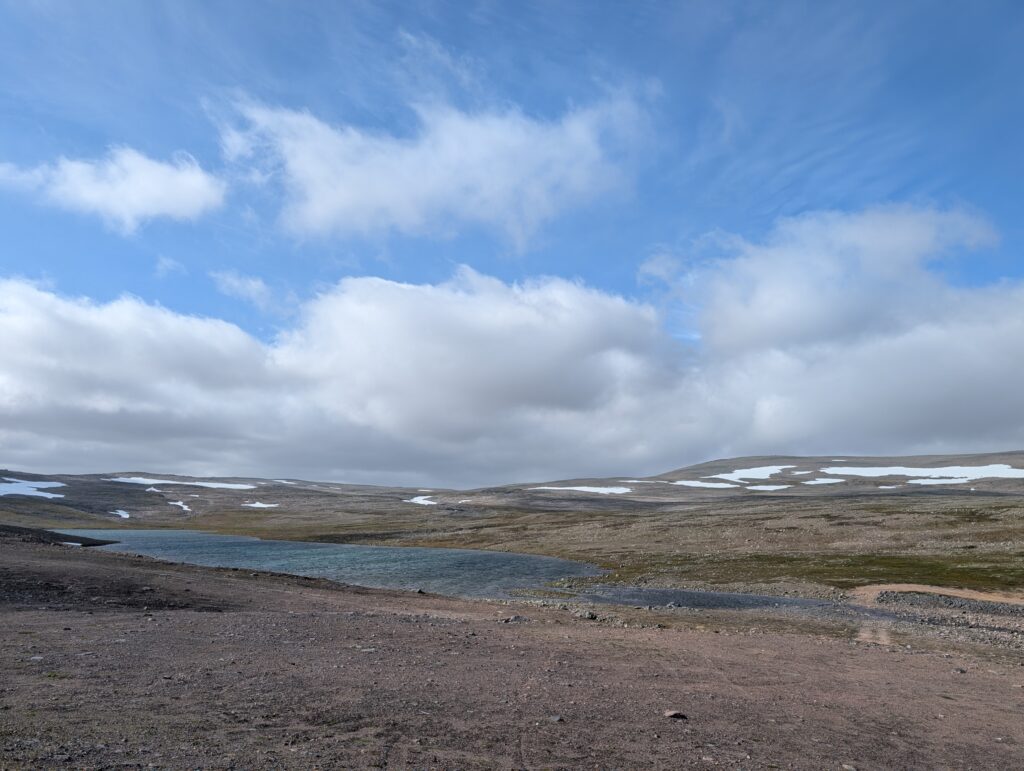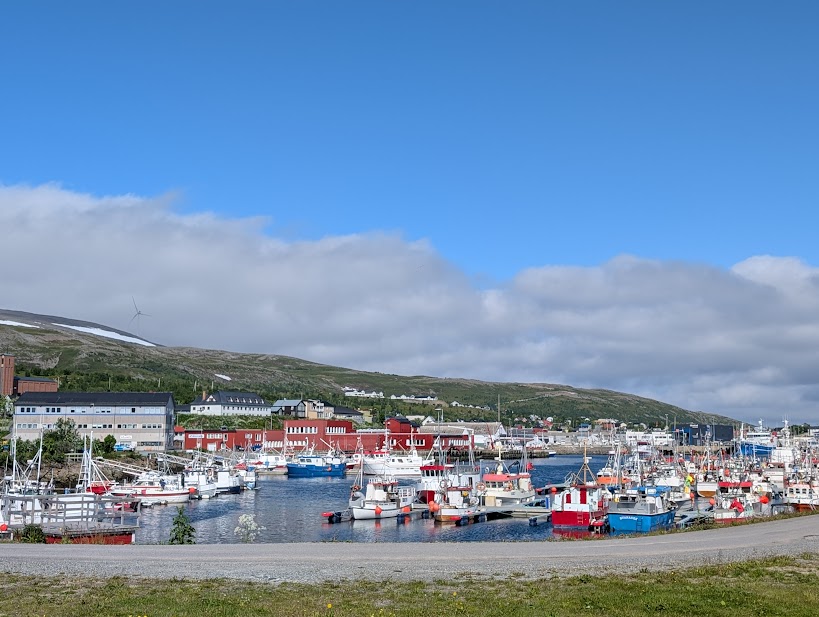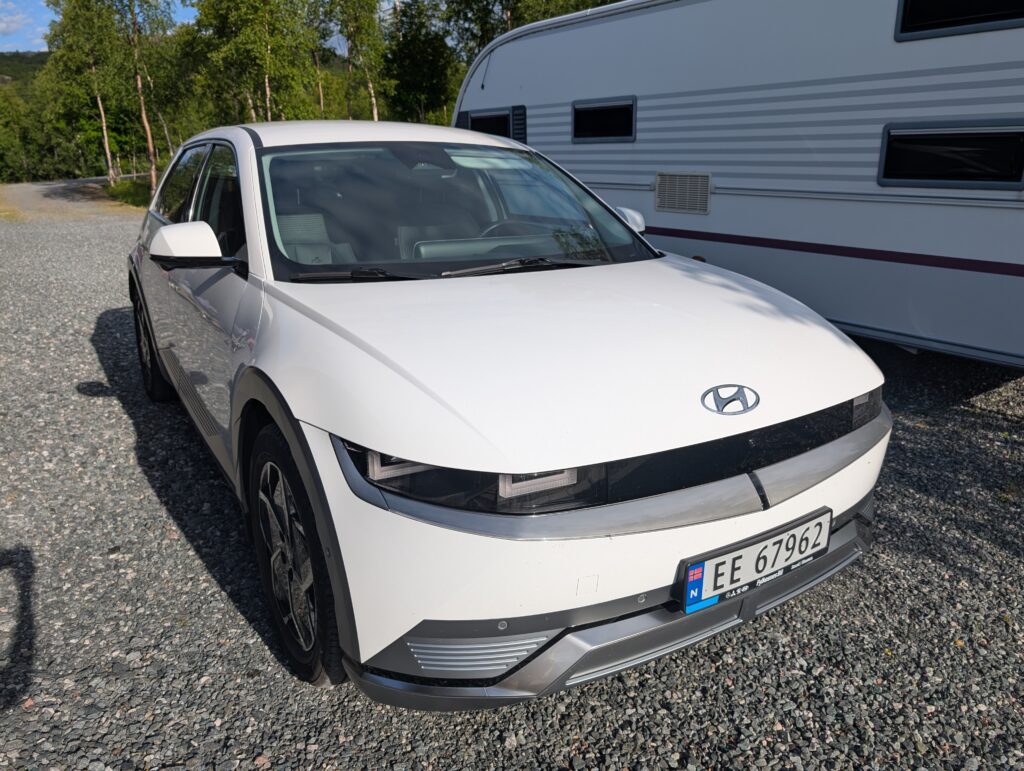By Iris Yim

Arctic Circle Landscape – Lake and Summer Snow
This summer, I traveled through Scandinavia with my family, reconnecting with my husband’s relatives and exploring some of the northernmost inhabited places on Earth. From tiny fishing villages in Arctic Norway to towns near the Russian border, I found unexpected lessons about the global forces shaping our world—online commerce, electric vehicles, and climate change—all unfolding in one of the planet’s most remote corners.
E-Commerce, Arctic Style
We began our Arctic journey in Båtsfjord, a small fishing village of about 2,000 people on Norway’s northern coast, where life is quiet, isolated, and deeply dependent on the sea. The town’s largest employer is a fish processing plant, and when I asked our relatives what other work people do here, the list was short: some healthcare jobs, a few civil servants, and tourism-related roles in shops and hotels. There’s a basic clinic in town, but for anything serious—surgeries, childbirth, or emergencies—residents must either drive three hours to the nearest hospital or hope for a helicopter evacuation, which isn’t always available. During our visit, a family member had a stroke, and due to helicopter unavailability, had to be driven the long distance by car.
In such an isolated place, online shopping is not a luxury—it’s a lifeline. Locals rely on e-commerce for everything from furniture and electronics to clothing and household essentials. Amazon has limited reach in Norway, so I was surprised to learn that people here are enthusiastic Temu users. My relatives had positive things to say about it, despite the four-week shipping time from China. In Båtsfjord, patience is a way of life. Temu’s customer-friendly refund and credit policies have even turned logistical hiccups into word-of-mouth endorsements—someone reportedly got a large item for free due to a shipping delay, cementing the platform’s reputation for reliability.

Batsfjord, Norway
Arctic-Proof EVs and the China Question
Later, we visited Bjørnevatn, a village near Norway’s border with Russia. Our host, Marja, drives a Hyundai Ioniq 5 and raved about its performance in sub-zero winters. She an her husband Geir bought the vehicle about three years ago. Geir had done extensive research before choosing the Ioniq 5 for its charging efficiency and long range. They traveled over 2,100 kilometers to Bergen in southern Norway to pick up the vehicle—a trek that underscored their confidence in the car’s capabilities. Over the past few years, charging stations have been popping up everywhere, even in this remote corner of the world. So Geir said driving range is not an important consideration anymore and charging efficiency has become critical.

Marja’s Hyundai IONIQ 5
As a researcher, I was curious: had they considered any of the Chinese EV brands, like BYD or NIO, which are gaining ground globally? Marja explained that while the technology is impressive, geopolitical uncertainty steered them away. Geir worried about what might happen if tensions between China and the West escalate further—especially in light of the war in Ukraine. If China were to restrict access to parts or maintenance support abroad, they’d be stranded in a region where reliability is critical.
It’s a pragmatic concern, but one that may not last forever. On our drive and visits, we saw BYDs and other Chinese EVs promoted in surprising places—even at a local Arctic attraction, the Snow Hotel in Kirkenes. The technology is advancing fast, and it’s likely just a matter of time before Chinese EVs become commonplace, even this far north.

Globalization at the Edge of the Map
The fact that Temu is a household name in Båtsfjord, and BYD is visible near the Russian border, shows just how interconnected the world has become. These aren’t early adopters in big cities—they’re everyday people living in villages of a few thousand, shaped as much by global supply chains and climate as by tradition.
That brings me to a final reflection. When Marja took us to a lookout point in the nearby town of Kirkenes, she apologized that the view wasn’t as open as it used to be. “The trees have gotten taller,” she said. Just a few years ago, the same spot offered an unobstructed panorama. The change was visible—and deeply symbolic.
While climate change may still be debated in some circles, up here in the Arctic, the effects are tangible. And so is the shifting terrain of global competition. The U.S. might be shutting out Chinese EV imports and embracing protectionism, but innovation won’t wait. Shielding domestic industries from competition may provide temporary comfort, but without keeping pace, it risks long-term decline.

Midnight Sun at Batsfjord
Remote Places, Global Signals
In these Arctic towns, the future isn’t arriving—it’s already here. The rise of Temu, the cautious yet inevitable spread of Chinese EVs, and the visible effects of climate change all point to a world where no place is truly isolated anymore. If we pay attention to what’s happening at the so-called “edges,” we may gain insight into what’s next for the rest of us.
